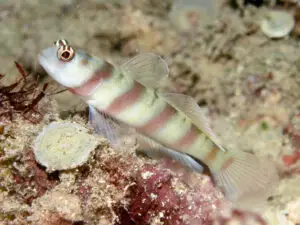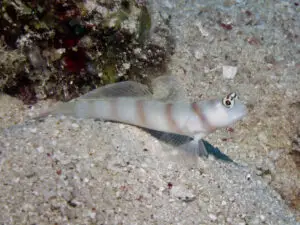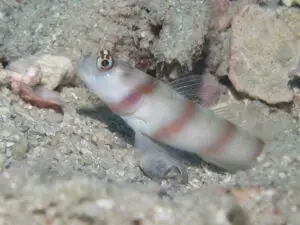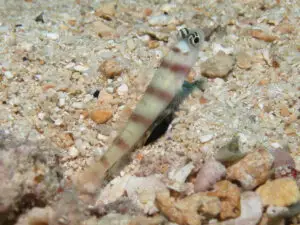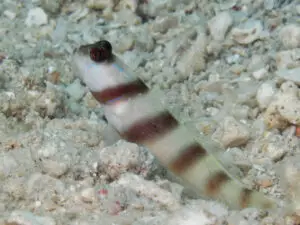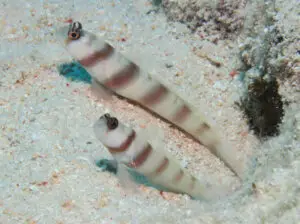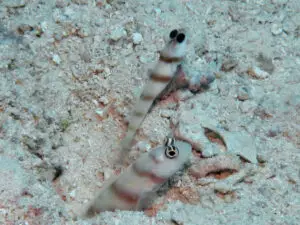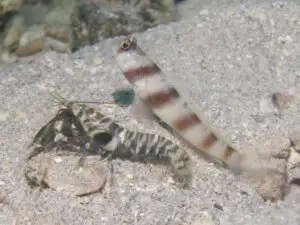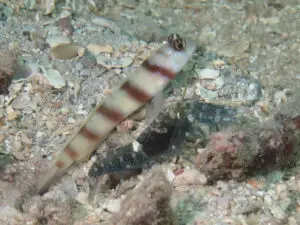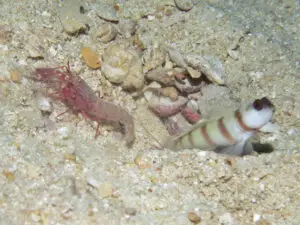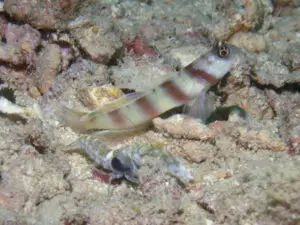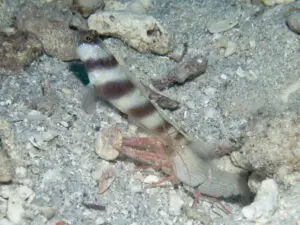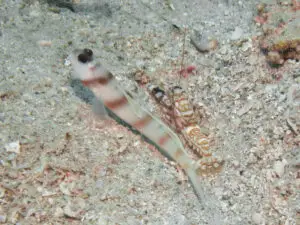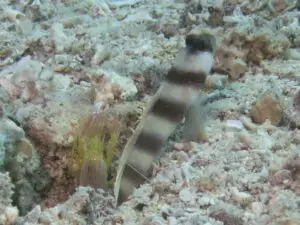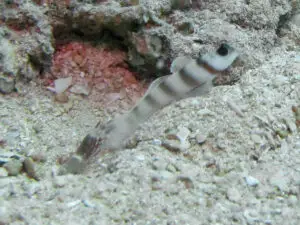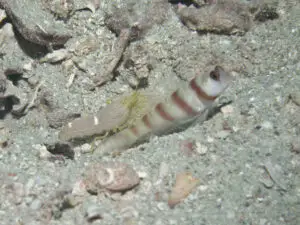Steinitz’s Shrimpgoby
Amblyeleotris steinitzi
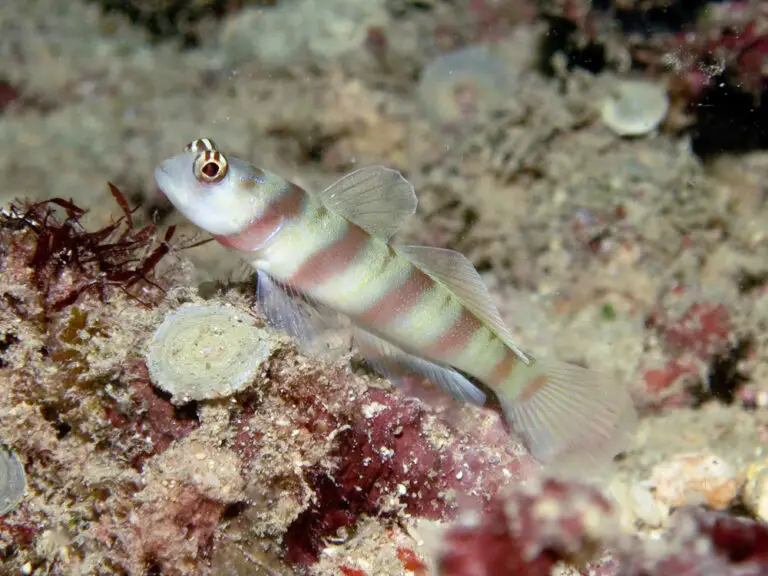
Steinitz’s Shrimpgoby
Amblyeleotris steinitzi
(Klausewitz, 1974)
Description
Body design
This is a medium sized goby, around 13 cm in length, white with 5 brown bars and sometimes a sixth on the tail base. Bars vary considerably in colour and depth of pigment from dark to very pale when the last three may be almost imperceptible. Between these are incomplete brown dorsal bands down from which may run inconspicuous rows of fine yellow spots.
The head is uniformly pale and the absence of pattern can pretty well be used as a recognition feature. There are lines of small reflective blue spots but they are not usually visible.
The face anterior to the eyes, the area from the eye to the lip, the dorsum of the head and the eyes themselves are all capable of turning black, but this is transitory and presumably emotion related.
Fin design
The dorsal fins are high and floppy. They are translucent, covered in tiny yellow spots and have a reflective margin.
The second dorsal fin, pelvic fin, pectoral fin, anal fin and caudal fins are all plain and translucent.
Diagnostic features
There are no very singular features and one tends to recognise the species by the absence of incidental markings on the standard brown banded white body. Characteristically they elevate their fins when approached. These are very high along their whole length and are a useful clue to the goby’s identity.
Similar species
Several species of this genus have a superficial similarity to this goby but have have additional markings that distinguish them.
Natural History
Habitat
They live on areas of uniform flat or slightly sloping sand and coral rubble along and beyond the base of the reef. They form clusters with the burrows in sight of each other. These may be in water depths of anything from 5 to 35 metres deep. Some are found closer to the reef wall, where they may be close to other species of shrimpgobies.
They are very adaptable. They are the most commonly seen shrimpgobies along the Great Barrier Reef. They associate with 8 different shrimps over a wide range of depths.
Behaviour
The tissue surrounding the eye has a signaling role and can be seen to change from a defined yellow and black pattern to dark grey and black while you watch. We have not yet worked out what triggers the change. It may be directed to other fish.
This photo also shows that pairs may be of different sizes.
Parasitic nudibranch
Like other species of shrimpgobies they are subject to parasitism by the nudibranch Gymnodoris nigricolor. Steinitz’s Shrimpgoby appears to be the most commonly targeted species. They bite the fish at the base of the dorsal, pectoral or caudal fins. They probably attach themselves to the goby when they are inside the burrow. We have observed these nudibranchs gliding over the sand and entering the burrow.
Sharing burrow with other fish species
Here is a Steinitz’s shrimpgoby sharing the burrow with a pair of Parva Sleeper Gobies Valenciennea parva.
Different sized shrimpgobies sharing burrow
lizard fish
colour change with display
Distribution
Published Distribution: Indo-West Pacific. Red Sea and Mauritius to Islands of Micronesia and Samoa; in the western Pacific from Ryukyu Islands to the Great Barrier Reef and New Caledonia.
Our records: Solomon Islands, Papua New Guinea, Vanuatu and Australia: Great Barrier Reef. Common from Lizard Island to Lady Musgrave Island.
Associated Shrimp species
Associated Shrimps (nine shrimps)
Banded Snapping Shrimp, Alpheus species 1
Black-sided Snapping Shrimp, Alpheus cf djeddensis
Brown Pyjama Snapping Shrimp, Alpheus ochrostriatus
Dark Marbled Snapping Shrimp, Alpheus macellarius
Pink Pyjama Snapping Shrimp, Alpheus ochrostriatus
Red Pyjama Snapping Shrimp, Alpheus ochrostriatus
Red Snapping Shrimp, Alpheus species 9
Tiger Snapping Shrimp, Alpheus bellulus
Yellow Pyjama Snapping Shrimp, Alpheus ochrostriatus

